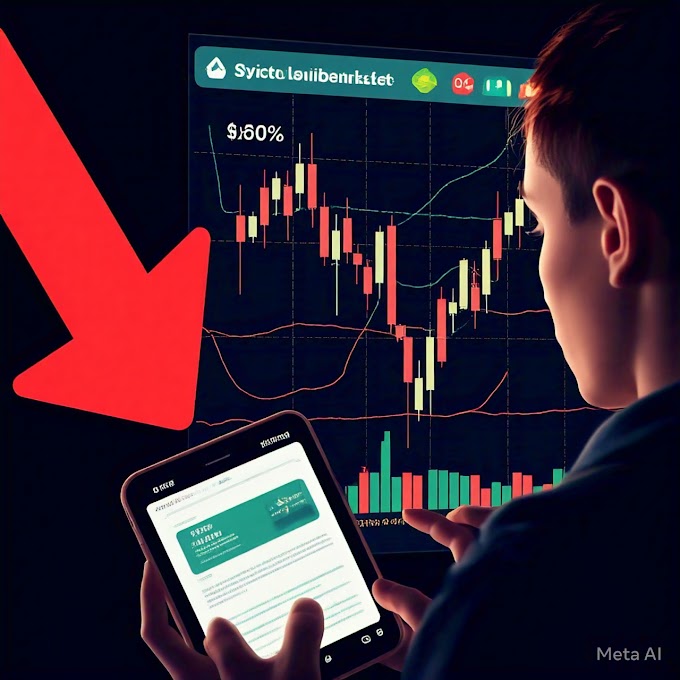Introduction
The world of cryptocurrency is no stranger to bold predictions. Prices rise and fall dramatically, fortunes are made and lost, and speculation runs wild. Among the most fascinating recent claims is Bloomberg's prediction that XRP, the cryptocurrency native to Ripple Labs, could one day reach a staggering $60,000.
Ripple has positioned XRP as a revolutionary force in global payments. Its speed, scalability, and low transaction costs offer a compelling alternative to traditional methods. If such a price surge were to happen, it could change the global financial landscape forever. But is this forecast realistic? What factors could drive XRP to such a height, and what would the implications be for the future of finance?
Let’s explore these questions and more in this in-depth analysis.
Table of Contents
- Introduction to XRP and Its Significance
- Bloomberg’s Prediction: Why $60,000?
- Ripple’s Strategic Partnerships
- Ripple’s Global Expansion
- XRP’s Unique Role in Cross-Border Payments
- The Potential Impact of XRP at $60,000
- The Enigma of Information Suppression
- XRP’s Future Potential: A Force to Be Reckoned With
- Frequently Asked Questions (FAQs)
- Conclusion: The Future of Finance Unfolds
1. Introduction to XRP and Its Significance
XRP, the cryptocurrency developed by Ripple Labs, was created to address inefficiencies in the global payment system. Unlike Bitcoin, which is often seen as a store of value, XRP focuses on enabling fast, low-cost, and scalable cross-border transactions. Its unique design makes it ideal for financial institutions looking to modernize outdated processes.
2. Bloomberg’s Prediction: Why $60,000?
Bloomberg, a respected name in financial analytics, has forecasted XRP reaching $60,000. This prediction is based on XRP’s role in disrupting traditional finance, particularly cross-border payments. While this price point may seem extraordinary, Bloomberg’s analysis highlights XRP's potential to scale and attract massive institutional investment.
3. Ripple’s Strategic Partnerships
Ripple’s strategy revolves around collaboration. It has partnered with global banks, financial institutions, and trade associations like the International Swaps and Derivatives Association (ISDA). These alliances demonstrate Ripple’s commitment to working within the existing financial ecosystem, increasing its credibility and reach.
4. Ripple’s Global Expansion
Ripple is actively expanding its presence in emerging markets such as Africa, the Gulf Cooperation Council (GCC) region, Latin America, and Southeast Asia. These regions have significant demand for cross-border remittances, and Ripple’s technology offers a cost-effective solution. By targeting these markets, Ripple is positioning XRP as a key player in global finance.
5. XRP’s Unique Role in Cross-Border Payments
Unlike traditional methods, which involve multiple intermediaries and high fees, XRP simplifies the process. Acting as a bridge currency, it enables near-instantaneous transactions between fiat currencies. This capability makes XRP invaluable for businesses and individuals needing fast and affordable cross-border transfers.
6. The Potential Impact of XRP at $60,000
If XRP were to reach $60,000, it would likely disrupt the financial world in several ways:
- Attracting institutional investors and sovereign wealth funds
- Challenging the dominance of the U.S. dollar in international trade
- Accelerating regulatory clarity and adoption of cryptocurrencies
- Lowering transaction costs for businesses globally
7. The Enigma of Information Suppression
Despite its innovations, XRP has faced negative press and limited mainstream media coverage. Some speculate that traditional financial institutions fear XRP’s disruptive potential, leading to deliberate suppression of information. Nevertheless, the XRP community has used online platforms to raise awareness and counteract negative narratives.
8. XRP’s Future Potential: A Force to Be Reckoned With
XRP’s combination of speed, scalability, and low cost gives it a competitive edge. Ripple’s expanding partnerships and focus on financial inclusion underline its ambition to reshape the global financial system. While the $60,000 prediction may seem distant, XRP’s potential to transform finance is undeniable.
FAQs
Q1: What is XRP’s primary purpose?
XRP is designed to facilitate fast, low-cost, and efficient cross-border payments by acting as a bridge currency.
Q2: Why is Bloomberg’s prediction significant?
Bloomberg is a trusted authority in financial forecasting, and its prediction highlights XRP’s potential to disrupt traditional finance.
Q3: What makes XRP different from Bitcoin?
While Bitcoin serves as a store of value, XRP focuses on enabling real-world utility in cross-border transactions.
Q4: Why is XRP underreported in the media?
Many believe that traditional financial interests are threatened by XRP’s disruptive potential, leading to biased or limited coverage.
Q5: What regions is Ripple targeting for growth?
Ripple is focusing on Africa, the GCC region, Latin America, and Southeast Asia, where demand for affordable remittances is high.
Conclusion: The Future of Finance Unfolds
The financial world is undergoing a transformation, and XRP is at the forefront. By addressing inefficiencies in cross-border payments, Ripple and XRP are paving the way for a more inclusive and efficient financial system.
While the $60,000 prediction may seem ambitious, it serves as a testament to the growing recognition of XRP’s potential. As partnerships expand and adoption increases, XRP could very well play a central role in shaping the future of global finance.



.png)




